Statue of Cecil Rhodes may refer to:

Cecil John Rhodes was an English colonialist, mining magnate and politician in southern Africa who served as Prime Minister of the Cape Colony from 1890 to 1896. He and his British South Africa Company founded the southern African territory of Rhodesia, which the company named after him in 1895. He also devoted much effort to realising his vision of a Cape to Cairo Railway through British territory. Rhodes set up the Rhodes Scholarship, which is funded by his estate.
Rhodes is the Greek Dodecanese island where the Colossus of Rhodes stood.

The University of Cape Town (UCT) is a public research university in Cape Town, South Africa. Established in 1829 as the South African College, it was granted full university status in 1918, making it the oldest university in South Africa and the oldest university in Sub-Saharan Africa in continuous operation.
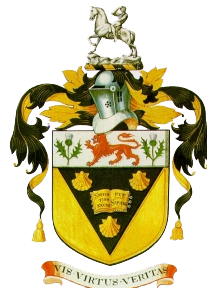
Rhodes University is a public research university located in Makhanda (Grahamstown) in the Eastern Cape Province of South Africa. It is one of four universities in the province. Established in 1904, Rhodes University is the province's oldest university, and it is the sixth oldest South African university in continuous operation, being preceded by the University of the Free State (1904), University of Witwatersrand (1896), University of South Africa (1873) as the University of the Cape of Good Hope, Stellenbosch University (1866) and the University of Cape Town (1829). Rhodes was founded in 1904 as Rhodes University College, named after Cecil Rhodes, through a grant from the Rhodes Trust. It became a constituent college of the University of South Africa in 1918 before becoming an independent university in 1951.
The South African College Schools is a public English medium primary and high education institution situated in Newlands - part of the Southern Suburbs region of Cape Town in the Western Cape province of South Africa. Founded in 1829, it is the oldest continously run school in South Africa.
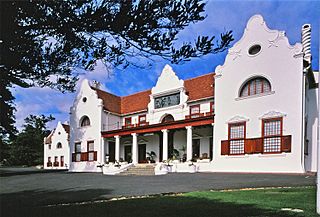
Groote Schuur is an estate in Cape Town, South Africa. In 1657, the estate was owned by the Dutch East India Company which used it partly as a granary. Later, the farm and farmhouse was sold into private hands. Groote Schuur was later acquired by William De Smidt, and remained in the family's possession until it was sold by Abraham De Smidt, Surveyor General of the Cape Colony, in 1878, and was bought by Hester Anna van der Byl of the prominent Van Der Byl / Coetsee family. In 1891 Cecil Rhodes leased it from her. He later bought it from her in 1893 for £60 000, and had it converted and refurbished by the architect Sir Herbert Baker. The Cape Dutch building, located in Rondebosch, on the slopes of Devil's Peak, the outlying shoulder of Table Mountain, was originally part of the Dutch East India Company's granary constructed in the seventeenth century.

The Rhodes Memorial is a monument on Devil's Peak in Cape Town, South Africa, a memorial to the English-born South African politician Cecil John Rhodes. It was designed by architect Herbert Baker.
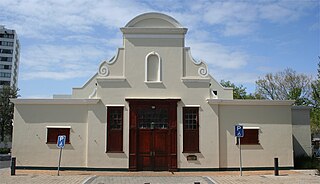
The Southern Suburbs are a group of Anglophone suburbs in Cape Town, Western Cape, South Africa. This group includes, among others, Observatory, Mowbray, Pinelands, Rosebank, Rondebosch, Rondebosch East, Newlands, Claremont, Lansdowne, Kenilworth, Bishopscourt, Constantia, Wynberg, Ottery, Plumstead, Diep River, Bergvliet and Tokai. The area is also commonly referred to as the Cape Peninsula, often including the towns further South such as Fish Hoek.
Cape to Cairo may refer to:
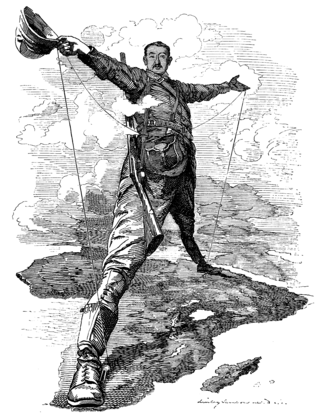
The Rhodes Colossus is an editorial cartoon illustrated by English cartoonist Edward Linley Sambourne and published by Punch magazine in 1892. It alludes to the Scramble for Africa during the New Imperialism period, in which the European powers, beginning in 1884, expanded their colonial expansion in Africa by dividing the continent up amongst themselves.

The siege of Kimberley took place during the Second Boer War at Kimberley, Cape Colony, when Boer forces from the Orange Free State and the Transvaal besieged the diamond mining town. The Boers moved quickly to try to capture the area when war broke out between the British and the two Boer republics in October 1899. The town was ill-prepared, but the defenders organised an energetic and effective improvised defence that was able to prevent it from being taken.

The Cape Qualified Franchise was the system of non-racial franchise that was adhered to in the Cape Colony, and in the Cape Province in the early years of the Union of South Africa. Qualifications for the right to vote at parliamentary elections were applied equally to all men, regardless of race.

The Cecil John Rhodes Statue is a monument erected at Company's Garden in Cape Town. The statue was erected in 1908. It features a full body replica of Cecil Rhodes wearing a three-piece suit, standing with his left hand raised and pointing north. It has been compared to the Jan van Riebeeck statue, which faces south and asserts a different sense of occupation. Despite its size, the present location of the monument in the Company's Garden makes it less significant in comparison to that of Jan Smuts at Adderley Street, Cape Town, a location that had been considered for the placement of the Rhodes statue.
2015 in South Africa saw a number of social and political protests and movements form. At President Jacob Zuma's 2015 State of the Nation Address, the president was interrupted by an opposition party, the Economic Freedom Fighters, who demanded that he pay back the money used on his Nkandla homestead. South Africa also saw new xenophobic uprisings taking place, mainly targeted towards Africans from other countries. Foreigners were beaten, robbed and murdered during the attacks. The social protest Rhodes Must Fall started in 2015 at the University of Cape Town to protest for the removal of statues erected in South Africa during the colonial era depicting some of the well known colonists who settled in South Africa. In education, South Africa recorded a drop in its matric pass rate from 2013 to 2014. The protest #FeesMustFall was started towards the end of the year and achieved its primary goal of stopping an increase in university fees for 2016. South Africa also saw the discovery of Homo naledi in 2015. The South African national rugby union team came third in the 2015 Rugby World Cup and Trevor Noah started hosting The Daily Show on Comedy Central.

Rhodes Must Fall was a protest movement that began on 9 March 2015, originally directed against a statue at the University of Cape Town (UCT) that commemorates Cecil Rhodes. The campaign for the statue's removal received global attention and led to a wider movement to "decolonise" education across South Africa. On 9 April 2015, following a UCT Council vote the previous night, the statue was removed.
Chumani Maxwele is a South African political activist best known for his involvement in the Rhodes Must Fall and the #FeesMustFall movements. Maxwele first gained prominence in 2010 after his wrongful arrest and interrogation for allegedly giving an obscene hand gesture to President Jacob Zuma's presidential motorcade convoy in Cape Town city traffic.
The following is a timeline of the history of the city of Bulawayo, Zimbabwe.

Sethembile Msezane is a South African visual artist, public speaker and performer who is known for her work within fine arts. Msezane uses her interdisciplinary practice which combines photography, film, sculpture, and drawing to explore issues focused on spirituality, politics and African knowledge systems. Part of her works focus has been on the process of myth-making and its influence on constructing history as well the absence of the black female body in both narrative and physical spaces of historical commemoration. Msezanes work is held in galleries in South Africa as well as internationally and has won awards and nominations. Msezane is a member of the iQhiya Collective, a network of black women artists originating from Cape Town, Johannesburg and across South Africa.
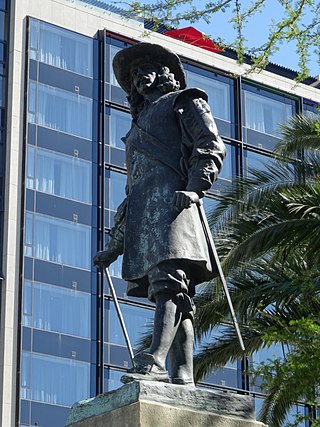
The statue of Jan van Riebeeck lies alongside the statue of Maria van Riebeeck on Heerengracht Street in Cape Town, South Africa. Both statues stand with their backs to the sea looking south to Table Mountain.

The Mandela Rhodes Building is a Cape Dutch revival building situated in Cape Town, South Africa.